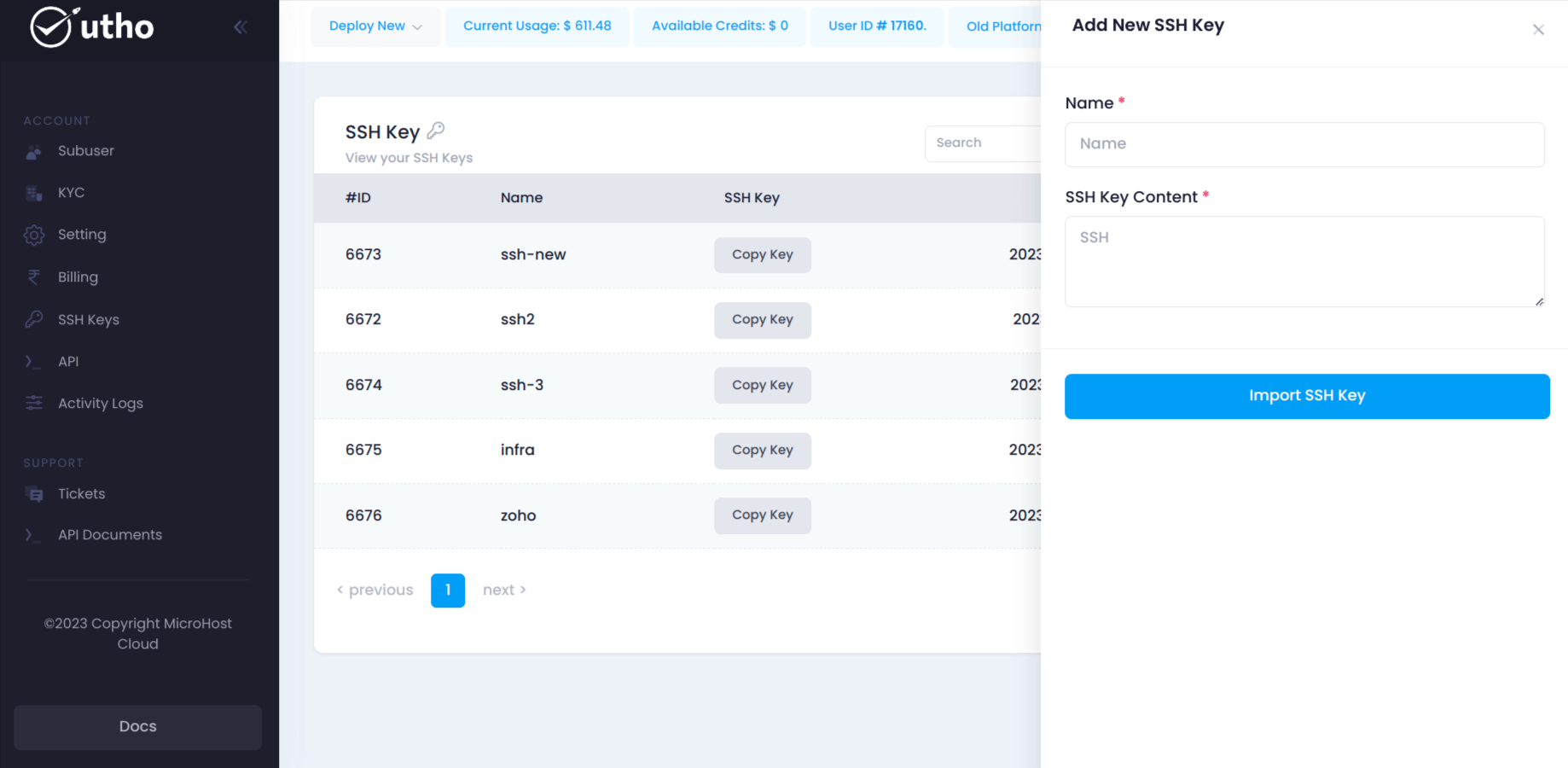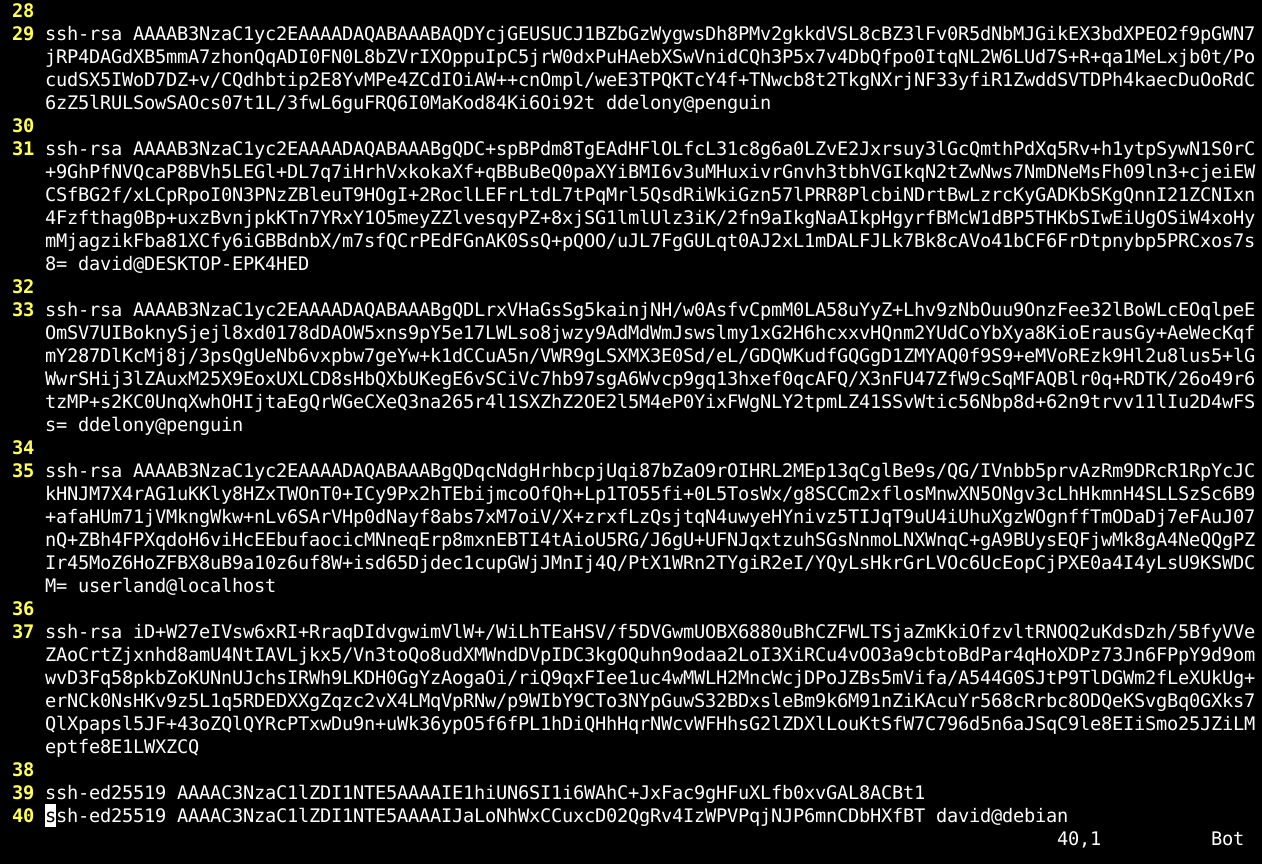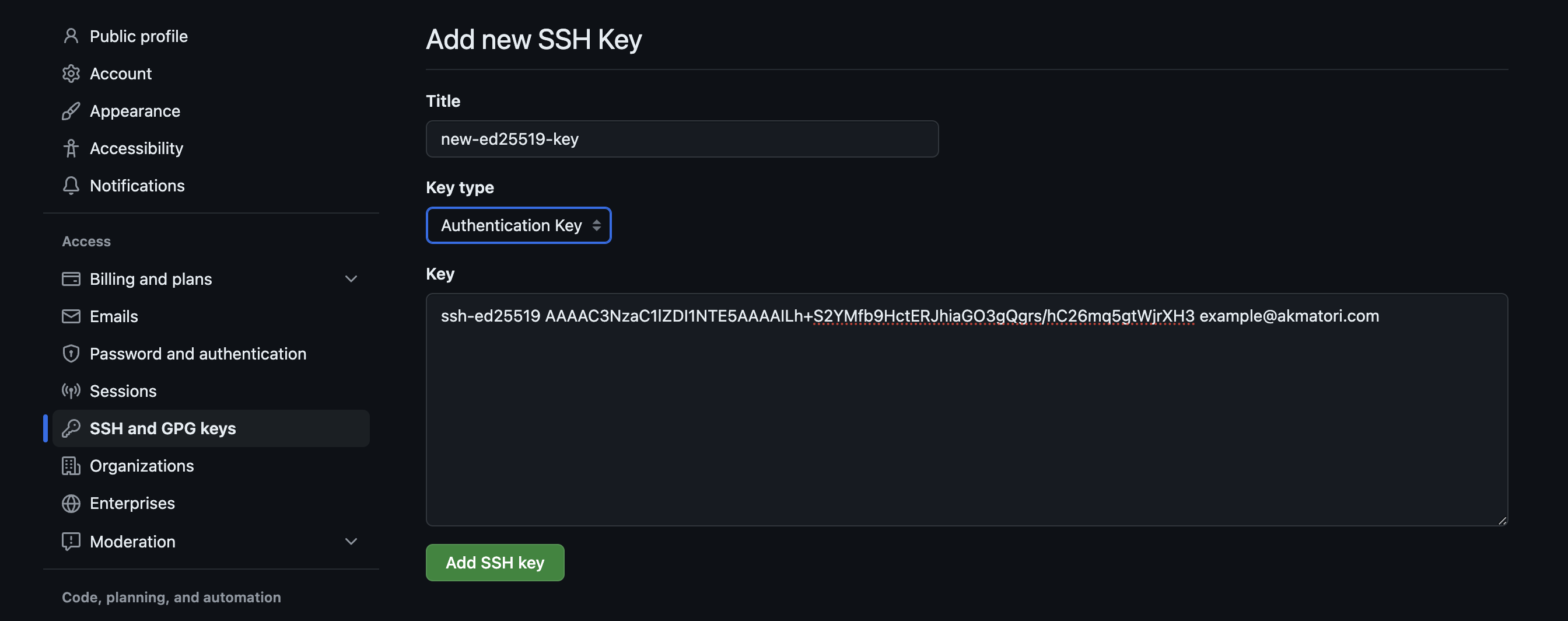When you have smart gadgets working far away, keeping them safe and sound is, frankly, a really big deal. Getting into these devices, especially the ones that are part of a remoteIoT platform, means you need a way to prove you are who you say you are. This is where a special digital pass, often called an SSH key, comes into the picture. It helps make sure only the right people can connect to your internet-connected things, keeping unwanted folks out of your digital space.
Think about all the smart devices around us, like sensors in a field or machinery in a factory, all connected through a remoteIoT platform. These devices often need a little check-up or an update from time to time, and you can't always be right there with them. So, you need a safe way to reach them from a distance. An SSH key provides that secure path, acting like a very private handshake between your computer and the device. It's, you know, kind of like having a secret knock that only you and the device understand.
Making sure these digital passes are used correctly is, basically, super important for anyone dealing with connected technology. A well-managed SSH key on a remoteIoT platform means your information stays private, and your devices do what they are supposed to, without any surprises. We'll chat a bit more about how these keys work and why they are such a good idea for keeping your distant gadgets protected.
Table of Contents
- What's the Big Deal with RemoteIoT Platform SSH Key Access?
- How Does a RemoteIoT Platform SSH Key Actually Work?
- Keeping Your RemoteIoT Platform SSH Key Safe- Why It Matters
- Common Worries About RemoteIoT Platform SSH Key Usage
- Is Your RemoteIoT Platform SSH Key Setup Good Enough?
- Steps to Make Your RemoteIoT Platform SSH Key More Secure
- Thinking Ahead with Your RemoteIoT Platform SSH Key
- What's Next for RemoteIoT Platform SSH Key Practices?
What's the Big Deal with RemoteIoT Platform SSH Key Access?
You might be wondering why we talk so much about these digital passes, especially when it comes to a remoteIoT platform. Well, consider this: many internet-connected devices are out there doing important jobs, sometimes in places far from where you are. Getting into them without proper identification is, quite honestly, a recipe for trouble. An SSH key is a way to make sure that only authorized individuals or systems can connect. It helps prevent someone with bad intentions from getting into your devices and causing problems, like messing with data or taking control of things they shouldn't. It's, you know, a very simple yet powerful way to keep things private and working right.
The truth is, without a solid way to control who gets in, your smart gadgets are, basically, open to anyone who figures out how to knock on their digital door. This could lead to all sorts of issues, from minor annoyances to really serious security breaches. For a remoteIoT platform, where many devices might be connected at once, one weak spot could, in a way, put everything at risk. So, using an SSH key is not just a suggestion; it's a fundamental step for keeping your connected world running smoothly and safely. It’s like putting a strong lock on your front door, even if you live in a quiet neighborhood.
How Does a RemoteIoT Platform SSH Key Actually Work?
Alright, so how does this special digital pass for a remoteIoT platform actually do its job? It's kind of like having two halves of a secret code. One half, called the public key, lives on the device you want to connect to. The other half, the private key, stays with you, safe on your computer. When you try to connect, the device sends a challenge, and your computer uses its private key to answer it in a way that only the matching public key can confirm. It’s, in some respects, a bit like a secret handshake where both sides confirm they know the special signal.
This method is, frankly, much more secure than using a regular password. Passwords can be guessed or stolen, but an SSH key is a very long, complex string of characters that is nearly impossible to guess. Plus, the private key never leaves your computer, so it’s not sent over the internet where someone might try to grab it. This makes it a really good choice for securing access to devices on a remoteIoT platform, where traditional password methods might not offer enough protection. It means your connection is, basically, much harder for unwanted eyes to peek into.
Keeping Your RemoteIoT Platform SSH Key Safe- Why It Matters
Having a special digital pass for your remoteIoT platform is one thing, but keeping that pass safe is another story entirely. Imagine having the only key to a treasure chest; you wouldn't just leave it lying around, would you? The same goes for your SSH key. If someone gets their hands on your private key, they could, quite literally, pretend to be you and gain access to all your connected devices. This could lead to them reading private information, changing how your devices work, or even making them stop working altogether. It's, you know, a really serious risk.
Protecting your SSH key means making sure it's stored in a place where only you can get to it. This often involves using strong passphrases to protect the key itself, and keeping it on a computer that is also well-protected from viruses and other digital threats. For anyone managing a remoteIoT platform, this step is, basically, non-negotiable. A compromised key can, in fact, undo all the good security practices you have put in place. It's about being responsible with your digital tools, ensuring they don't fall into the wrong hands.
Common Worries About RemoteIoT Platform SSH Key Usage
Even though SSH keys are a good way to secure things, people often have a few worries about using them, especially with a remoteIoT platform. One common concern is that managing many different keys for many different devices can feel like a lot of work. It’s true that keeping track of which key goes where can be a bit of a puzzle, particularly as your setup grows. Another worry is what happens if a private key is lost or stolen. If that happens, you have to quickly replace the key on all the devices it was used for, which can be, you know, a bit of a scramble.
There's also the question of how to share access when more than one person needs to connect to the same remoteIoT platform. Giving out private keys isn't a good idea, as it makes them less secure. These are all valid points that, frankly, need thought. However, with good practices and perhaps some tools to help manage keys, these worries can be lessened. It's all about finding a balance between convenience and keeping things really safe, making sure the system is, in a way, easy to use but hard to break into.
Is Your RemoteIoT Platform SSH Key Setup Good Enough?
So, you've got your SSH keys in place for your remoteIoT platform, but how do you know if your setup is, actually, doing its job well? It's a fair question, and one that, you know, needs a bit of a check-up now and then. A good way to tell is by asking yourself a few things: Are your private keys protected with strong passphrases? Are they stored on devices that are themselves secure? Do you have a process for removing access if someone leaves your team or if a device is no longer needed? These questions help you see if your current way of doing things is, in fact, up to snuff.
Sometimes, what was good enough yesterday might not be good enough today, especially as new ways to get around security pop up. For a remoteIoT platform, where the devices might be out in the open or in places that are not always watched, having a strong SSH key setup is, basically, like having a really good security guard. You want to be sure that guard is awake and ready. Regularly reviewing your key management practices can help you spot any weak points before they become, you know, a real problem. It’s about being proactive, not reactive.
Steps to Make Your RemoteIoT Platform SSH Key More Secure
Making your remoteIoT platform SSH key setup even safer doesn't have to be, you know, super complicated. There are some fairly simple steps you can take. First, always use a passphrase for your private keys. This adds an extra layer of protection, meaning even if someone gets your key file, they still need another secret word to use it. Second, consider using different keys for different devices or different types of access. This way, if one key is ever compromised, it doesn't affect everything else. It’s, in some respects, like having different keys for different doors in your house.
Third, make sure you regularly change or update your keys, especially if they've been around for a long time. This is a bit like changing your locks after a while, just to be extra careful. Fourth, keep your private keys on as few devices as possible, and make sure those devices are well-protected with up-to-date security software. Finally, for a remoteIoT platform, think about using systems that help manage and rotate keys automatically. This can take some of the manual work out of it and make things, honestly, much more secure without you having to remember every little detail. It's about building a stronger wall around your digital stuff.
Thinking Ahead with Your RemoteIoT Platform SSH Key
As smart devices become, you know, even more common and the remoteIoT platform grows, thinking about the future of your SSH key practices is a really good idea. What works today might need to change tomorrow as new technologies and new ways of doing things come along. One thing to consider is how you will handle a very large number of devices. Managing keys one by one might become, frankly, too much work. So, looking into tools that automate key management and deployment can save you a lot of headaches down the road. It's about scaling up your security as your system gets bigger.
Another thing to keep in mind is the idea of "least privilege," which, basically, means giving devices or users only the access they absolutely need, and nothing more. For a remoteIoT platform, this might mean having different keys for different levels of access – one key just for reading data, another for making changes, and so on. This way, if a key is ever misused, the damage it can do is, you know, very limited. It’s about being smart and planning for what might happen, making your system resilient against potential issues before they even appear.
What's Next for RemoteIoT Platform SSH Key Practices?
Looking at what's coming next for remoteIoT platform SSH key practices, we can see a move towards even more automated and integrated ways of handling these digital passes. We're talking about systems that can create, distribute, and revoke keys without much human involvement, which makes things, honestly, much faster and less prone to human error. There's also a growing interest in using other types of security methods alongside SSH keys, like multi-factor authentication, where you need more than one way to prove who you are. This adds, you know, another layer of safety.
The goal is to make security so simple and automatic that it just works in the background, without getting in the way of what you need to do with your remoteIoT platform. This means that while the core idea of an SSH key will stay the same, the tools and processes around it will likely get much smarter and easier to use. It’s about making sure that as our connected world grows, our ability to keep it safe keeps pace, making sure your devices are, basically, always under your watchful eye, even from far away.
Related Resources:



Detail Author:
- Name : Selmer Barton
- Username : rwest
- Email : mziemann@yahoo.com
- Birthdate : 1983-08-11
- Address : 84636 Braxton Mall Apt. 152 New Garnetshire, MS 20812-3761
- Phone : 310.751.9751
- Company : Terry and Sons
- Job : Electrical Engineering Technician
- Bio : Vel adipisci tempore voluptatem aut rerum et. Accusantium harum sunt tenetur totam dolorem repellat.
Socials
tiktok:
- url : https://tiktok.com/@jarretglover
- username : jarretglover
- bio : Et voluptas voluptatem nobis asperiores doloremque et et.
- followers : 3646
- following : 60
twitter:
- url : https://twitter.com/gloverj
- username : gloverj
- bio : Quod aut placeat voluptates animi ut est dignissimos. Ut et saepe placeat eum eos. Sed sapiente autem culpa esse autem ea explicabo.
- followers : 207
- following : 1356
facebook:
- url : https://facebook.com/jarret_glover
- username : jarret_glover
- bio : Esse voluptatem consequatur dicta esse qui.
- followers : 1516
- following : 1975